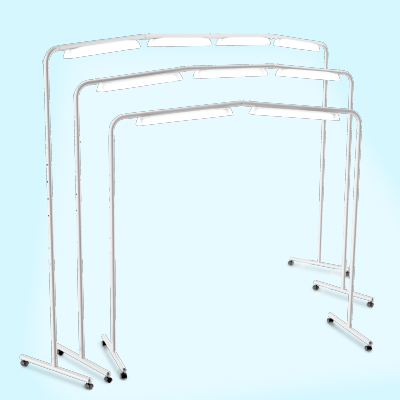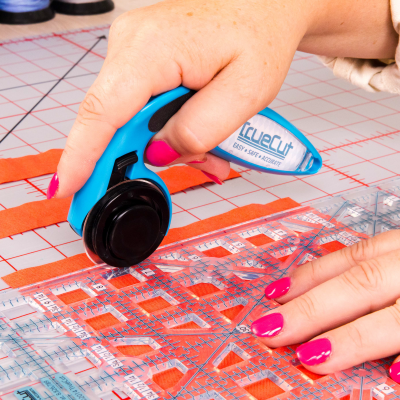Top 9 Mistakes Quilting Beginners Make and How to Avoid Them
If you’re new to quilting, you will make mistakes. That’s just an inevitable truth that comes with learning a new skill. No matter how many tips you pick up from experienced quilters, no matter how many blog posts or articles you read, your first quilt won’t be flawless. And that’s great! Every mistake along the way is a step on your quilting journey to be celebrated.
That said, if you are trying to build up enough confidence to start your first quilt, or if you’re not sure why your first quilt doesn’t look quite the way you thought it would, we hope this list is a helpful resource as you learn.
1. Choosing the Wrong Fabric
“Wrong” might be a strong word. Still, using fabrics with mismatched material content can lead to uneven shrinking in the washing machine, leading to a messier quilt top than you might want.
Thinking about color theory is another great way to ensure the best possible outcome for your quilt. Some colors look better together than others.
Solution: Choose fabrics with the same makeup for an even look, even after your quilt comes out of the wash. If you’re looking for color theory resources, check out this video. You’ll put together an expert color palette in no time!
2. Skipping Prewashing
Look, doing laundry isn’t exactly my favorite activity either, but prewashing fabric will prevent color bleeding and uneven shrinking when your quilt is finished.
Solution: Wash your fabrics before cutting and sewing, especially if you’re working with dark or vibrant colors.
3. Quilting with Poor Lighting
Before you start quilting, you should consider the space you’re in. A well-lit space will help you see every detail of your stitching without straining your eyes.
Solution: Grace Company’s Luminess Light Station is the perfect size to light up quilting frames or tabletop quilting stations, ensuring that even if you’re in the darkest basement, you’ll be able to see every stitch of your quilt.
4. Cutting Inaccurately
In the beginning, precise cutting takes a lot of patience and time. Once you’ve quilted for a while, cutting gets easier and faster. You’ll build up muscle memory for exactly how much pressure to put on your rotary cutter, and you’ll master ruler placement. Rushing through this step will lead to blocks lining up incorrectly and a messier finish overall.
Solution: Invest in a rotary cutter, cutting mat, and clear quilting ruler. Take your time to measure and cut each piece accurately. Replace your rotary blade regularly to ensure clean cuts.
5. Ignoring the Importance of a Quarter-Inch Seam
Consistent seam allowances are critical in quilting. Beginners often struggle to maintain an accurate quarter-inch seam, leading to blocks that don’t align properly.
Solution: Use a quarter-inch presser foot or mark your sewing machine’s plate with a guide. Practice sewing on scrap fabric until you can maintain an even seam.
6. Not Pressing Properly
Pressing seams might seem unimportant, but this step is just as important as cutting or sewing. If you want smooth, flat blocks, you have to press your seams. Beginners often skip this step or press seams incorrectly.
Solution: Most patterns have specific instructions for how to press your seams, so pay attention to those steps! A good rule of thumb, though, is to press your seams so that they lay flat against whatever fabric in your block is darkest.
7. Taking on a Complex Pattern Too Soon
Ambition is great, but diving into a complicated pattern as a beginner can lead to frustration and abandoned projects.
Solution: Start with a simple pattern, such as a basic nine-patch or rail fence. These patterns allow you to practice essential skills without feeling overwhelmed. Once you’re comfortable, work up to more complex designs.
8. Neglecting the Importance of Basting
Basting holds your quilt top, batting, and backing together. Skipping this step or doing it poorly can lead to puckers and wrinkles during quilting.
Solution: Use safety pins, spray adhesive, or thread to baste your quilt layers securely. Work on a flat surface and smooth out each layer as you go.
9. Being Too Hard on Yourself
Quilting is a learning process, and mistakes are part of the journey. Beginners often expect perfection and become discouraged when their first projects don’t turn out as planned.
Solution: Embrace the imperfections and view them as opportunities to learn. Every quilter started as a beginner, and each project will help you improve your skills.
Make Mistakes. Make Progress. Make Quilts.
Congratulations on being brave enough to take the first steps into a new passion! Being a beginner at anything can be intimidating, and so many people never explore new interests for exactly that reason.
When you make your first mistake, know that everyone makes mistakes when they start out. The greatest quilters in the world probably made the same error on their first quilt!
When you see improvement in your work, take pride in how far you’ve come, and acknowledge your growth.
When you make quilts, admire them for what they are: you learning, growing, and making something beautiful when you could have done nothing instead.
Posted by The Grace Company
For over 25 years the Grace Company has been the leading manufacturer of high quality quilting frames and quilting accessories. What truly sets The Grace Company apart from other competitors is its level of quality, value, and experience toward all their endeavours. From products to external and internal customer experience, the Grace Company responds to market and customer needs and continues to lead the quilting industry. Grace Company frames and hoops are designed to be easy to build and compatible with most major quilting machines. They'll have the quilting product you need.



